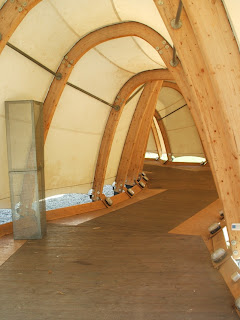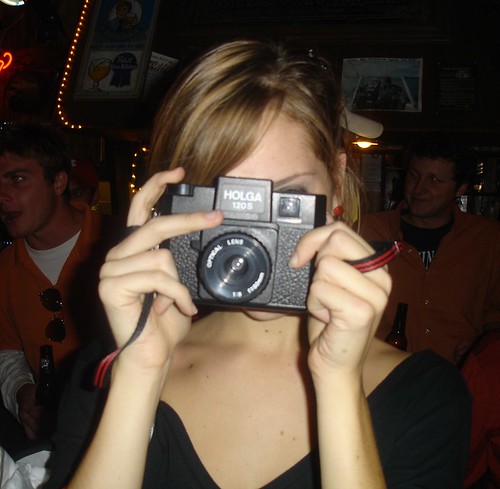Previous post shows the sexy brown pillowcase. Who in the hell would ever think sheets like that were a good addition to a home? They're not even soft. But I digress.
I had to get kinda creative with the fabric distribution, because I was working with limited materials. I already had some plain muslin on hand to line it with, which I also used for the strings and neck strap.
A shot of how I pieced it together:
 Instead of stenciling or applique'-ing a chicken, I found a cute hen pillow on etsy and decided to straight-up steal the idea. My twist, though: Hen Pocket! It's a Pocket. Shaped like a Hen.
Instead of stenciling or applique'-ing a chicken, I found a cute hen pillow on etsy and decided to straight-up steal the idea. My twist, though: Hen Pocket! It's a Pocket. Shaped like a Hen.Closeup of Hen all laid out:
 Aren't you cute. The details were small sample bits included when I ordered some other fabric. I'm pleased at how well the colors go. I considered putting an egg on there somewhere, but I think it's fine without.
Aren't you cute. The details were small sample bits included when I ordered some other fabric. I'm pleased at how well the colors go. I considered putting an egg on there somewhere, but I think it's fine without.I'll skip the how-to, because there are lots of better apron patterns than the one I came up with on the fly out there on the internet, and cut right to the Finished Product, as modeled by the lovely Brahbrah (who is still Under Construction):


I'm pretty stoked on this, it is Hell of Cute. One note, though. The fabric came from the thrift store, and I didn't wash it before I started the project, because the laundromat was not in my plans until after I wanted to start on it. Ironing stuff straight from the thrift store produces a Seriously Disgusting Smell. It's like Thrift+. I'm going to wash it this afternoon before forking it over, but man. I think I've learned my lesson.










































